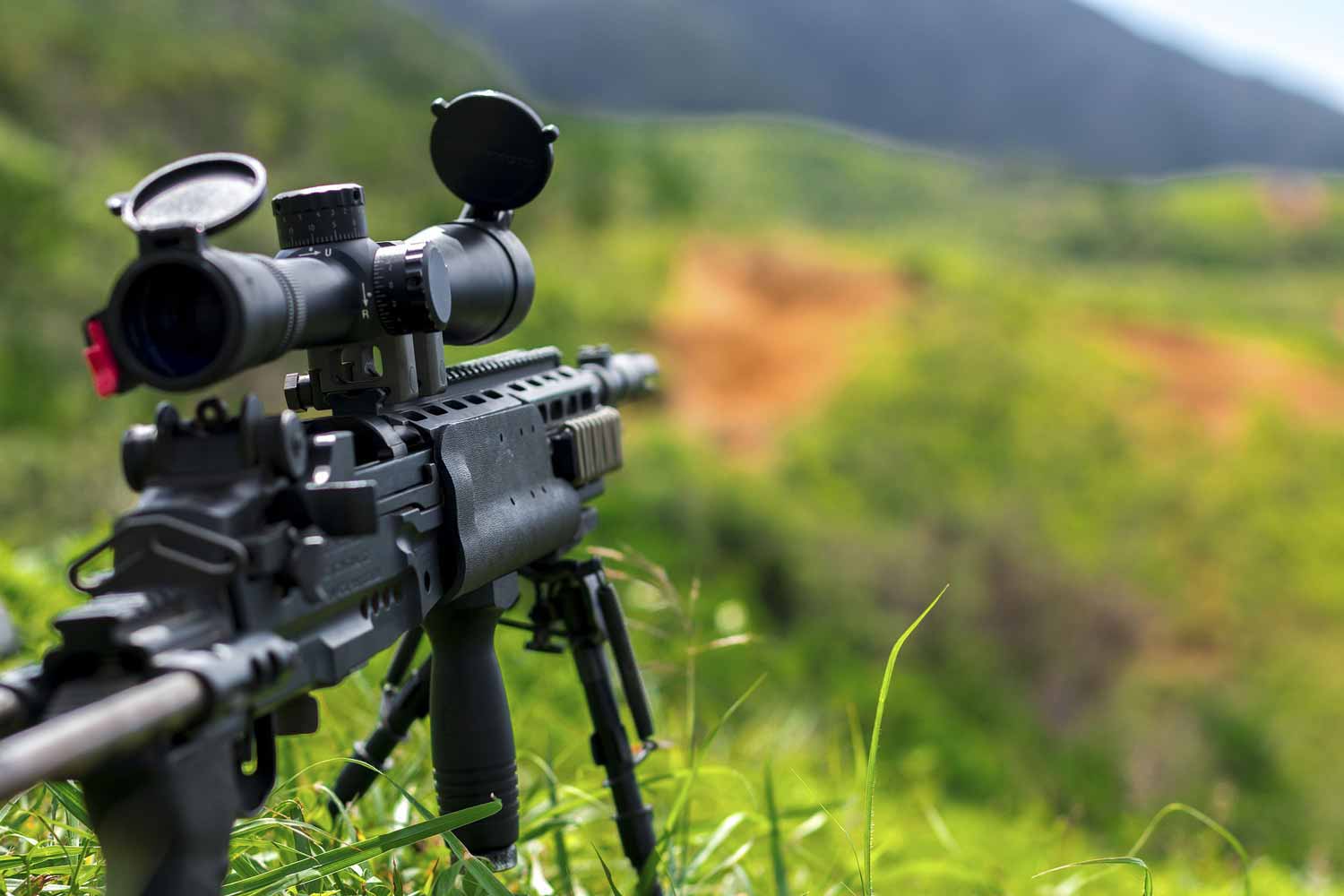
20th Sep 2018
Airsoft Sniper Maintenance Guide
Sniping in airsoft is an absolute art-form. It takes dedication, patience, skill and practice both on the field and off the field in the workshop. Airsoft sniper rifles are a precision instrument and it takes hundreds of hours of work to make them perform exactly as you would expect them to.
With that in mind, whether you’ve built your own rifle from scratch, or you’ve just picked up a stock base rifle to work with, you need to know how to keep it maintained. Propper maintenance will not only ensure that the rifle operates reliably for longer, it’ll also improve your accuracy and confidence in the field.
Depending on whether you’ve got a gas rifle or a spring rifle, you’ll need to know slightly different things, so we’ve broken this down into two parts, Spring Rifles and Gas Rifles.
Before we get into the specifics of each kind of sniper rifle, there are some things that span both (and even other kinds of airsoft gun), so we’ll cover them here.
We didn’t write this guide solely to plug our products, it’s just that we happen to have a product for almost everything you need to maintain your airsoft gun.
This guide is primarily based on the VSR-10 platform, however its principles generally apply across the board.
General Maintenance and care
Keep it dry
First things first, make sure that your airsoft rifles stay dry. Moisture can be the primary destroyer of airsoft guns, so keep them stored in a dry place. If you’re out in the field and it happens to rain, before putting everything back in the bag and heading home, make sure you give it a thorough wipe down for moisture. Moisture creates rust, rots wood, damages finishes.
Clean the Barrel
The barrel is key to your airsoft sniper rifle’s performance, you would be amazed how dirty the barrel can get, even after a few games. Get yourself a cleaning rod (one will have come with your rifle, otherwise you can purchase them online) and some cleaning supplies. Use some fabric patches, cleaning wipes or simple tissue paper, and remove all of the gunk from the barrel.
We’ve got a whole video on the process
Magazine Maintenance
Your magazines feed your rifle! Keep them in tip-top condition, otherwise you won’t have a BB in the chamber when you most need it. For both spring and gas rifles, you need to ensure that the BBs travel smoothly inside the magazine. The follower shouldn’t get caught on anything and the spring should give strong upward pressure. Dismantle, clean with degreaser, and smooth out any manufacturing imperfections to keep them flowing smoothly.
If you have a gas sniper rifle, there are a few extra maintenance tips that you need to follow in the gas section.
Hop-Up
The hop-up is arguably the “heart” of the airsoft gun. It decides where the BB goes, so look after it. Be careful when cleaning the barrel, if you’re too violent or your push the cleaning rod too far, you could tear the hop-up bucking nub.
Ensure that no lubricant ever touches the hop-up bucking. The hop-up needs friction, lubricants stop friction.
If you ever notice a “flyer” (a random shot which goes in a completely unexpected direction) or that your overall FPS and accuracy has dropped, it could be that your hop-up bucking is torn, and needs replacing.
Spring Rifles
Spring rifles are an arguably simpler kind of airsoft weapon than other airsoft gun types. They don’t rely on electricity or compressed gas. However, it’s the mechanical parts that do the work, which means they’re under some serious load. Ensuring that they’re well maintained will keep your rifle from jamming up or breaking in the middle of a skirmish.
Spring airsoft sniper rifles operate by pulling back a piston against a spring. When it’s released, the piston fires forward and compresses the gas in front of it and forces it (and the BB) out of the barrel. This process puts some pressure on the internals.
Piston
Inside the cylinder is the piston. There are 2 main aspects of the piston to pay attention to here. Primarily, you have the piston head, which uses an o-ring to produce a seal. Without this o-ring, or if it were to be dry / damaged, you would get an inconsistent FPS.
Ensure that the o-ring is lubricated with a silicon based lubricant, for the best FPS consistency. You may notice this o-ring failing if your fps fluctuates wildly.
The piston is held back in the firing piston by a seer that latches against the end of the piston. This, on most stock rifles is at a 45 degree angle, so not the most stable of platforms. Check the condition of the face of this latching surface and ensure it’s in good condition. Similarly you should check the seer (covered in the trigger section later).
Cylinder
The cylinder surrounds the piston and faces abuse internally from the piston, and externally from the elements and friction. This is one of those pieces that needs to be kept pristine to make the rifle work smoothly.
The cylinder head screws into the end of it. This cylinder head has an o-ring which (just like the rest of the o-rings) is crucial for ensuring gas is routed correctly and efficiently. Make sure it’s lubricated properly with a silicon based lubricant and in good condition regularly. You may notice this o-ring failing if your fps fluctuates wildly.
Give the inside of the cylinder a good look. Make sure there’s no debris or dirt on the inside walls that might hinder the piston’s movement.
The outside of the cylinder is held in by bushings. These bushings are plastic and take the full friction of the cylinder as it’s pushed around when working the action. Check the outside of the cylinder and ensure there are no gouges or debris which will damage or hinder these bushings. Then, check the condition of the bushings (housed inside the receiver). These should be nice and smooth, and well lubricated with a thick silicon based grease.
Trigger Group
The trigger group is something that’s not often paid attention to. It’s the series of seers, levers and springs that fire the gun when the trigger is pulled (or engage the safety).
The trigger group, due to its position in the gun, can become really grubby and begin to make trigger pulls harder or prevent the safety from working entirely. The trigger group will benefit from a regular tear down, clean, lubrication and re-assembly. Since this movement is metal on metal friction, we recommend a molybdenum based grease.
As mentioned earlier, here you should check the condition of the seer which holds back the piston. This seer is a common failure point in some weapons, so keep an eye for early signs of wear and tear.
Gas Rifles
Gas rifles, in general are put under less stress than spring airsoft guns, however, they do still require careful maintenance. The compressed gas stored within the magazines or in the stock is always looking for a way to escape. Careful and regular maintenance means it’s only ever leaving out the barrel.
Magazines
Gas magazines need a little bit of extra maintenance compared to spring sniper rifle magazines. The majority of magazines for sniper rifles hold the gas, so they need to stay sealed all skirmish.
To keep the magazine maintained, keep it with some gas pressure in it. The lubricants within the gas will help keep the o-rings fresh. Alternatively, store it with some maintenance gas.
If however, if it looks like the magazine is beginning to leak. It will need to be dismantled and serviced. Here’s a guide on that specifically.
Trigger
The trigger unit within a gas airsoft sniper rifle will require maintenance to ensure that it operates smoothly. It’s a tight unit, where metal parts rub against other metal parts, so you need to ensure the trigger box is clean and well lubricated with a molybdenum based grease.
Bolt
The bolt of a gas sniper rifle is a difficult one to maintain. It’s a metal-on-metal part, so it requires constant cleaning and lubrication to keep it moving freely. However, it also loads a BB into the hop-up chamber, so you don’t want lubricant anywhere near the hop-up. It’s also usually used to route gas through and behind the BB, so it’s got a o-ring or two in there as well. For the bolt, we highly recommend a careful, and systematic approach to cleaning and lubricating. Clean the bolt and the receiver rails thoroughly, lightly grease the rails with a moly grease and keep the o-rings fresh with silicone oil. Don’t put any lubricant near the feed lip.
